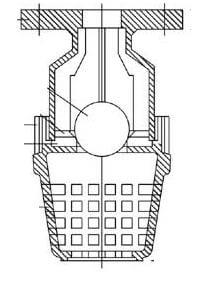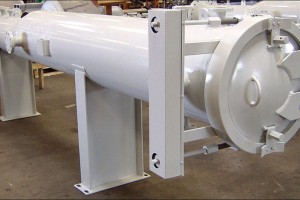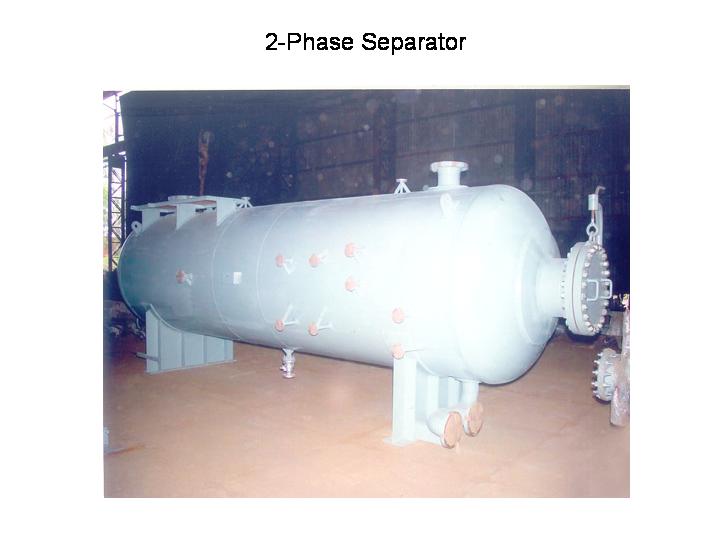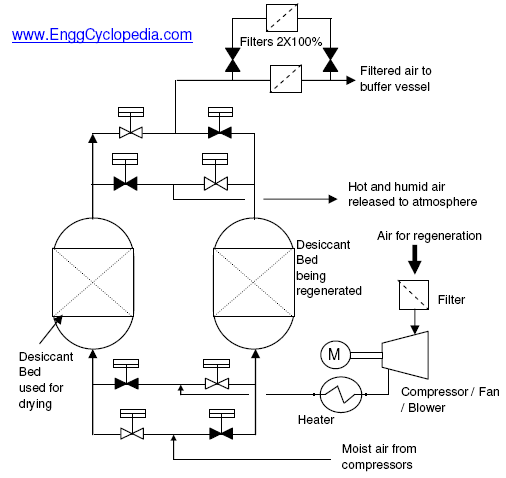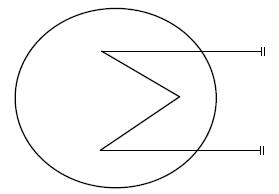A foot valve is a one-way valve that is installed at the end of the suction line in a pump system. It helps to maintain the prime of the pump, prevent backflow, and protect the pump from debris or solids.
This means that the pump remains full of fluid and is able to start up easily without any air pockets. Without a foot valve, the pump may lose its prime and require manual priming, which can be time-consuming and inconvenient.
Table of content:
Working mechanism of foot valve
Design materials of foot valve
Use of foot valves in pumps
Priming the pump by installing a foot valve
Working mechanism of foot valve
A foot valve is installed at the end of a suction line in a pump system. It typically consists of a valve body, a valve disc, and a strainer or screen to prevent debris from entering the pump. Study step by step the working mechanism of foot valve in pumps.
- The valve disc is held in place by a spring or weight and opens when the pump is running to allow fluid to flow into the pump.
- When the pump is turned off, the valve disc closes to prevent fluid from flowing back out of the pump and causing the pump to lose its prime.
- As fluid flows into the pump, the valve disc opens and allows the fluid to pass through the valve body and into the pump.
- When the pump is turned off, the valve disc closes due to the force of the spring or weight, which creates a seal to prevent backflow.
- The strainer or screen at the bottom of the valve body helps to prevent debris from entering the pump and causing damage.
Overall, the mechanics of a foot valve are relatively simple, but they are critical for maintaining the prime of the pump and preventing backflow. By using a foot valve in a pump system, you can ensure that the pump remains full of fluid and is able to start up easily without any air pockets or other issues.
Design materials of foot valves
Foot valves come in a variety of materials and designs, each suited for different types of pump applications. The following are some of the most common materials and designs used for foot valves.
- Brass: Brass foot valves are durable and corrosion-resistant, making them ideal for use in pumps that handle clean water or other non-corrosive fluids.
- Cast iron: Cast iron foot valves are typically used in pumps that handle more abrasive fluids or fluids that contain small solids, such as sand or gravel. They are strong and durable, but may be prone to corrosion over time.
- PVC: PVC foot valves are lightweight and corrosion-resistant, making them a popular choice for pumps that handle corrosive fluids or are used in marine environments.
- Stainless steel: Stainless steel foot valves are highly resistant to corrosion and can withstand high temperatures, making them ideal for use in pumps that handle corrosive or high-temperature fluids.
- Flapper design: Some foot valves use a flapper design instead of a disc and spring or weight. The flapper design consists of a rubber or silicone flap that opens and closes to allow fluid to flow into the pump. Flapper foot valves are often used in pumps that handle fluids with high solids content or debris.
- Dual check valve design: In some cases, foot valves may use a dual check valve design, which consists of two check valves in series. This design provides an extra layer of protection against backflow and can help to maintain the prime of the pump.
Overall, the choice of material and design for a foot valve will depend on the specific pump application and the type of fluid being pumped. It's important to choose a foot valve that is compatible with the fluid and can handle any solids or debris that may be present.
Use of foot valve in pumps
Using a foot valve in pump applications can provide several benefits which are listed here.
- Maintaining the prime of the pump: When a pump is not in use, the fluid in the suction line can drain back into the source, causing the pump to lose its prime. By using a foot valve, the valve can prevent the fluid in the suction line from flowing back into the source, helping to maintain the prime of the pump.
- Preventing air pockets from forming: When a pump is not primed properly, air pockets can form in the suction line, which can prevent the pump from functioning properly. By using a foot valve, the valve can help to prevent air pockets from forming in the suction line, ensuring that the pump can start up easily and without any issues.
- Preventing backflow of fluid: In some pump applications, it is important to prevent the backflow of fluid, which can cause damage to the pump or other components of the system. By using a foot valve, the valve can prevent backflow of fluid, ensuring that the pump operates safely and effectively.
- Protecting the pump from debris: In some pump applications, debris or solids may be present in the fluid being pumped. By using a foot valve with a built-in strainer or screen, the valve can help to prevent debris or solids from entering the pump, which can cause damage to the pump or other components of the system.
- Improving pump efficiency: By maintaining the prime of the pump and preventing air pockets from forming, a foot valve can help to improve the efficiency of the pump. This can lead to lower energy costs and improved performance over time.
Overall, using a foot valve in pump applications can provide several benefits, including improved pump efficiency, protection from debris, and prevention of backflow and air pockets. It's important to choose the right foot valve for your specific application and to ensure that it is installed correctly to achieve the best results.
Priming the pump by installing a foot valve
Detailed procedure for priming by installing a foot valve method has been discussed here.
A foot valve is a form of check valve installed at the bottom, or foot, of a suction line. When the pump stops and the ports of the foot valve close, the liquid cannot drain back from pump suction if the valve seats tightly. Foot valves were very commonly used in early installations of centrifugal pumps. Except for certain applications, their use is now much less common.
A better method is to close a valve in the discharge line and prime by evacuating air from the highest point of the pump casing. Many types of vacuum pumps are available for this service.
A priming chamber is a tank that holds enough liquid to keep the pump submerged until pumping action can be initiated.
Self-priming pumps usually incorporate some form of priming chamber in the pump casing.
